Nature and technology are often perceived as polar opposites – one evolving slowly over millions of years, the other advancing at lightning speed. Only at the hands of visionary artist duo A.A. Murakami could these two worlds converge in a way few others could imagine. Their latest project, A Thousand Layers of Stomach, transforms the beauty of an ancient clam into a groundbreaking generative textile artwork. Debuted during Art Blocks Weekend in Marfa, Texas, the installation explores how generative design can draw from the natural world, bridging the gap between evolution and innovation.
At the heart of A Thousand Layers of Stomach is the Asari clam, a species with intricate shell patterns that holds centuries of history and, for A.A. Murakmi, endless fascination. “When you pull one from a cloudy miso soup, it’s like a little surprise every time,” shares Alexander Groves, co-founder of A.A. Murakami. Its physiological process involves filtering seawater for calcium, which is transformed into calcium carbonate to form its shell. Each line represents a year of the clam’s life, a phenomenon that has led to remarkable discoveries, like the Ming clam, thought to have lived during the Ming dynasty. These shells are surprisingly analogous to modern technological advances, with the clam’s “printing nozzle” acting as a biological 3D printer. Inspired by this process, A.A. Murakmi developed a generative code that powers a customized knitting machine – a technological “clam” that prints out hundreds of lines of textile, much like a mollusk builds its shell pattern.
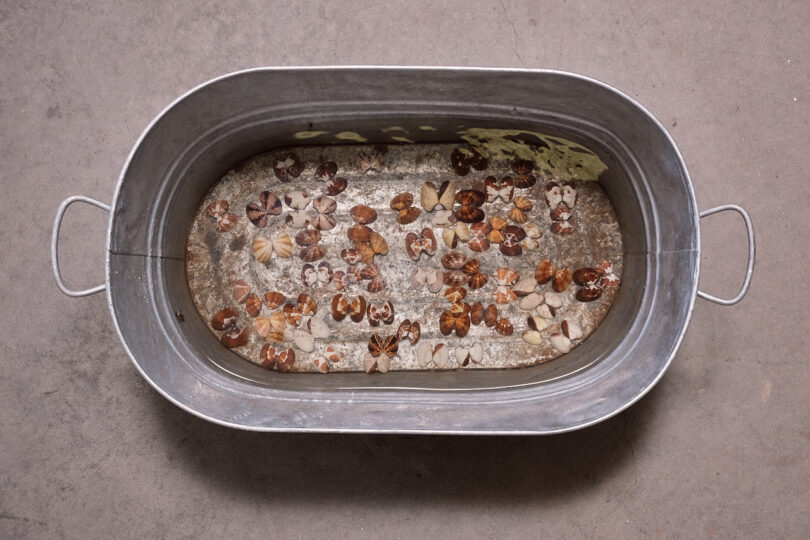
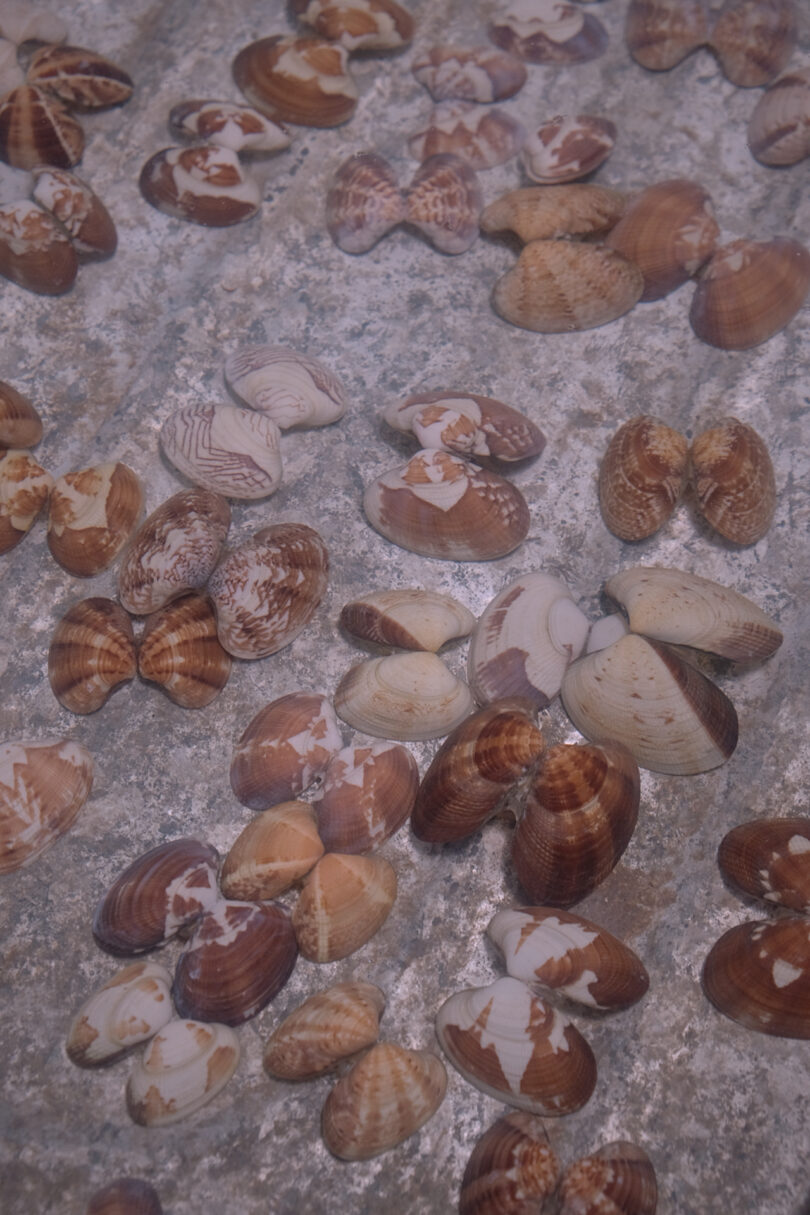
What makes A.A. Murakami’s work even more unique is what they coined as “ephemeral tech,” a departure from typical digital interfaces like screens or projects. To delve deeper into this process and the themes behind A Thousand Layers of Stomach (including where it got its name), TRAME Paris – the collaborative studio and curated gallery presenting this work – caught up with A.A. Murakami co-founder, Alex Groves, for an exclusive interview. In this conversation, he shares insights into their innovative approach to ephemeral tech, the fascinating biology of the Asari clam, and how this project bridges nature, technology, and design. Read on to explore the thought process and ingenuity that brought this unique generative art to life:
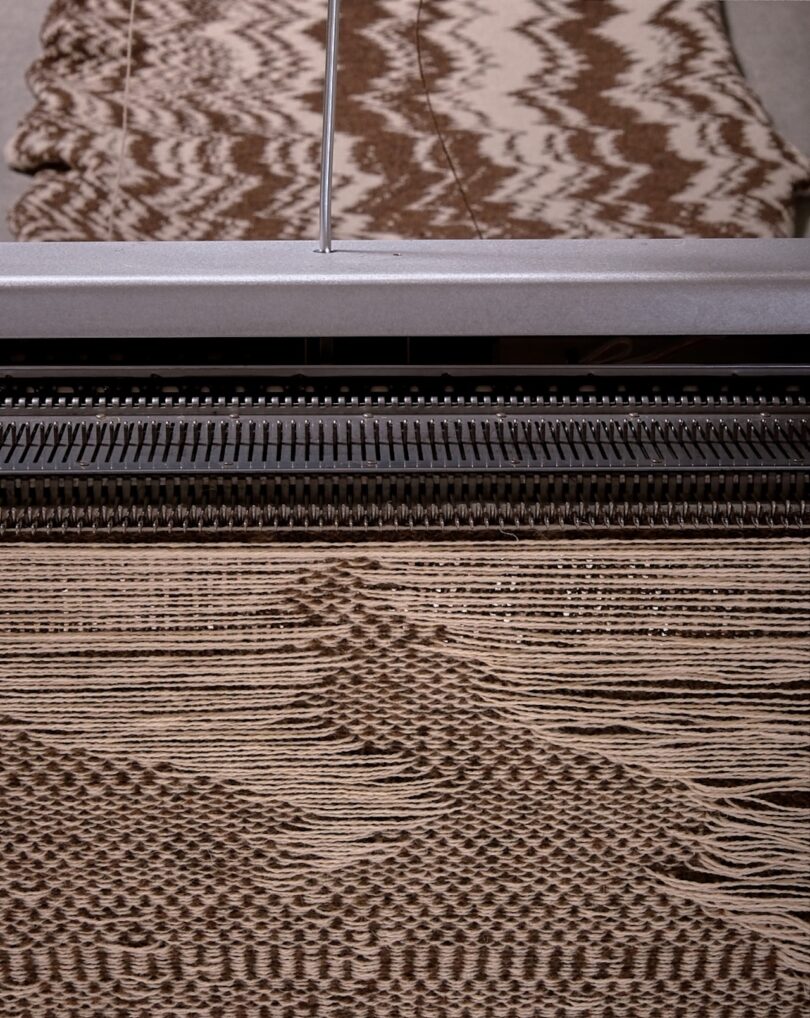
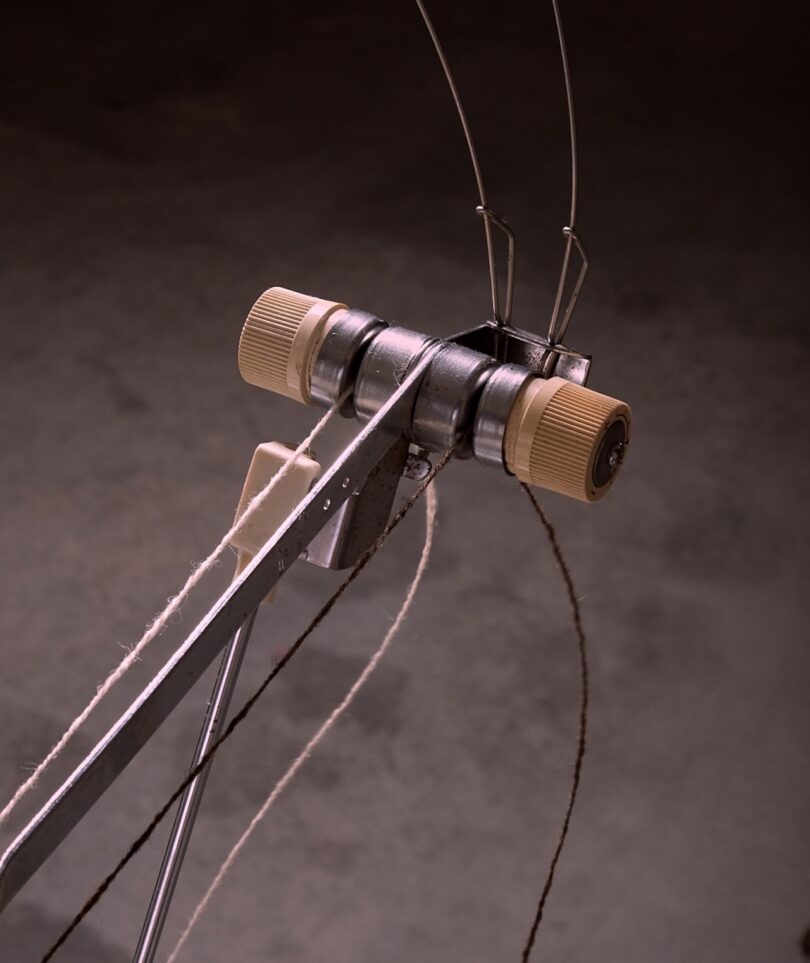
What about the Asari clam’s biology inspired the project?
This incredible organism, which evolved over 500 million years ago, became a profound source of awe for us. We studied scientific algorithms to mimic these patterns and landed on cellular automata, developed in the 1950s. While it’s great for generating patterns from simple rules, it didn’t quite capture the organic intricacy of clam shells. So, we worked with a programmer to refine it, incorporating the unique characteristics of the Asari clam and how environmental factors shape its patterns.
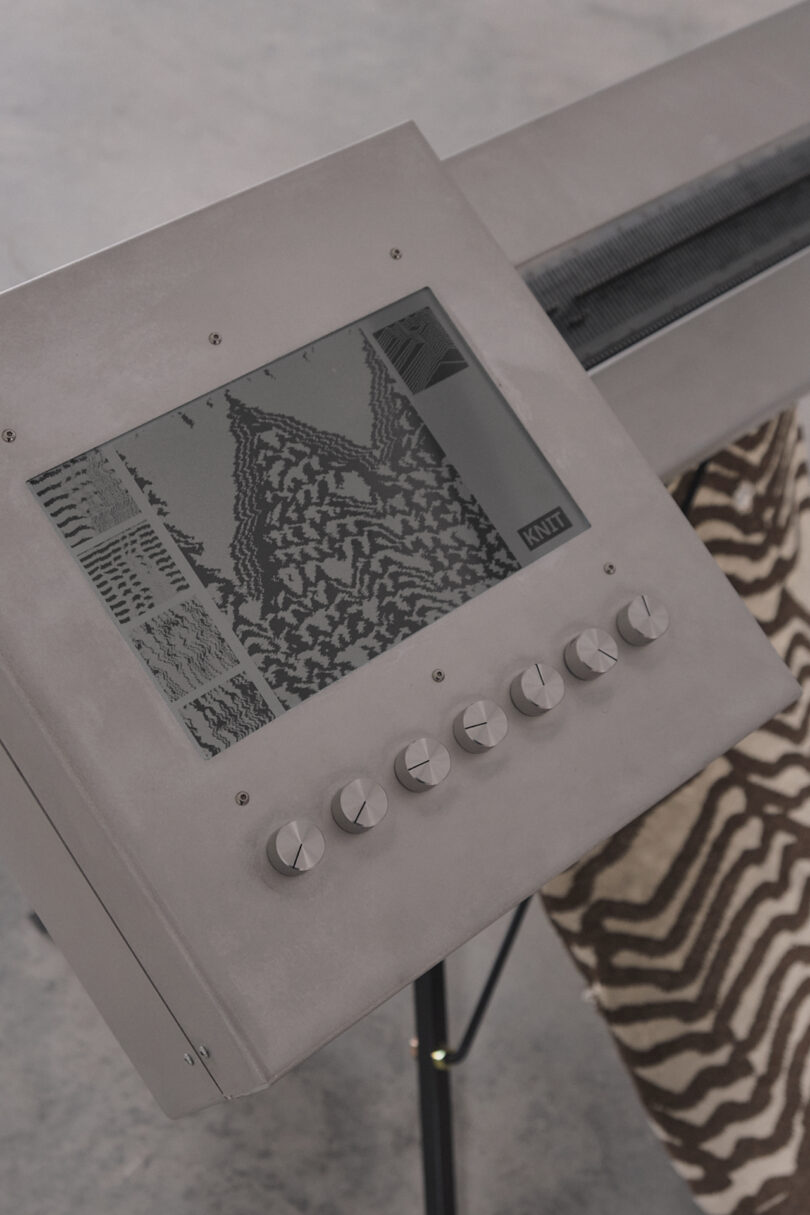
How does this project fit into your larger body of work?
It’s part of what we call “ephemeral tech” – technology that goes beyond the usual digital interfaces like screens or projections. Instead, it manifests in physical forms that interact with the tangible world. We’ve worked with fleeting states of matter, like bubbles, fog, and plasma, to create these experiences. While there’s a lot of underlying technology, where you meet it is very physical and immediate.
The generative code we’ve developed for this project is similar. It’s like the intangible code in a clam’s DNA that manifests physically in its shell patterns. The title, A Thousand Layers of Stomach, actually came from a translation of a tripe dish on a Chinese menu. It stuck with us because it felt both earthy, grounded and at the same time sublime – a perfect metaphor for this project.
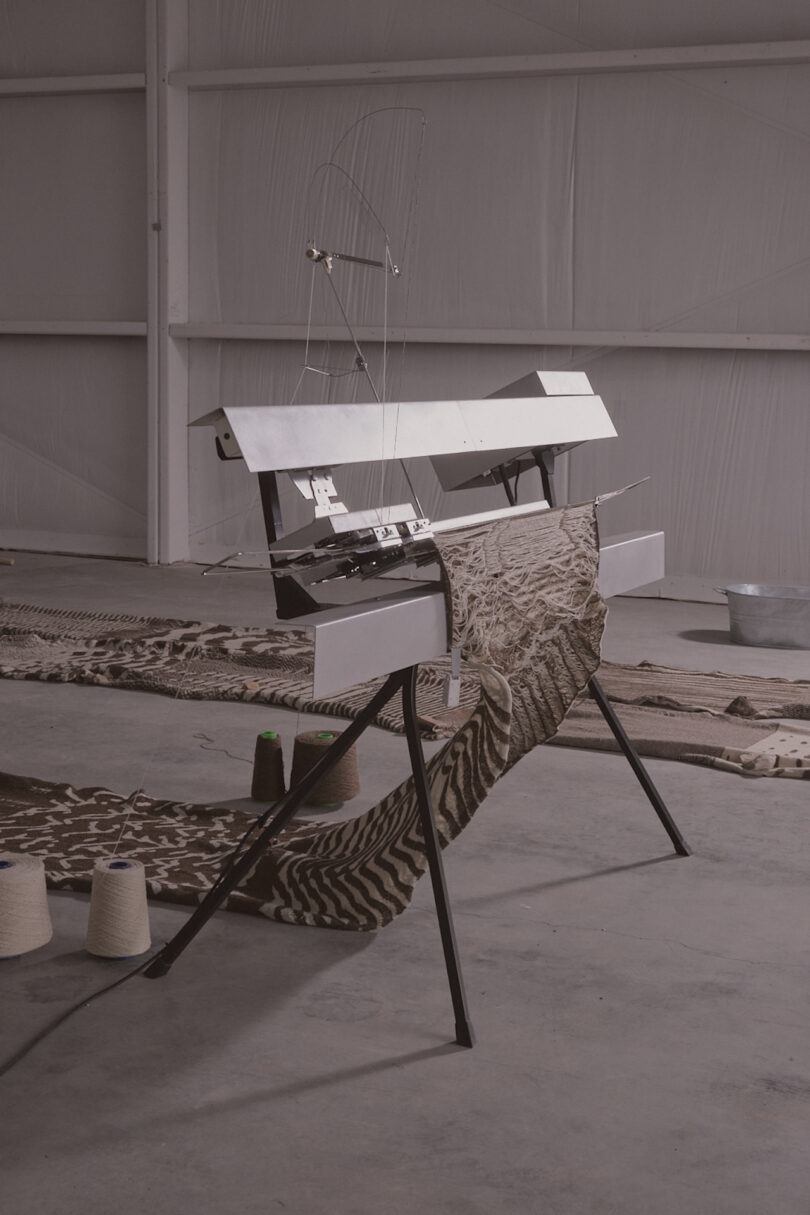
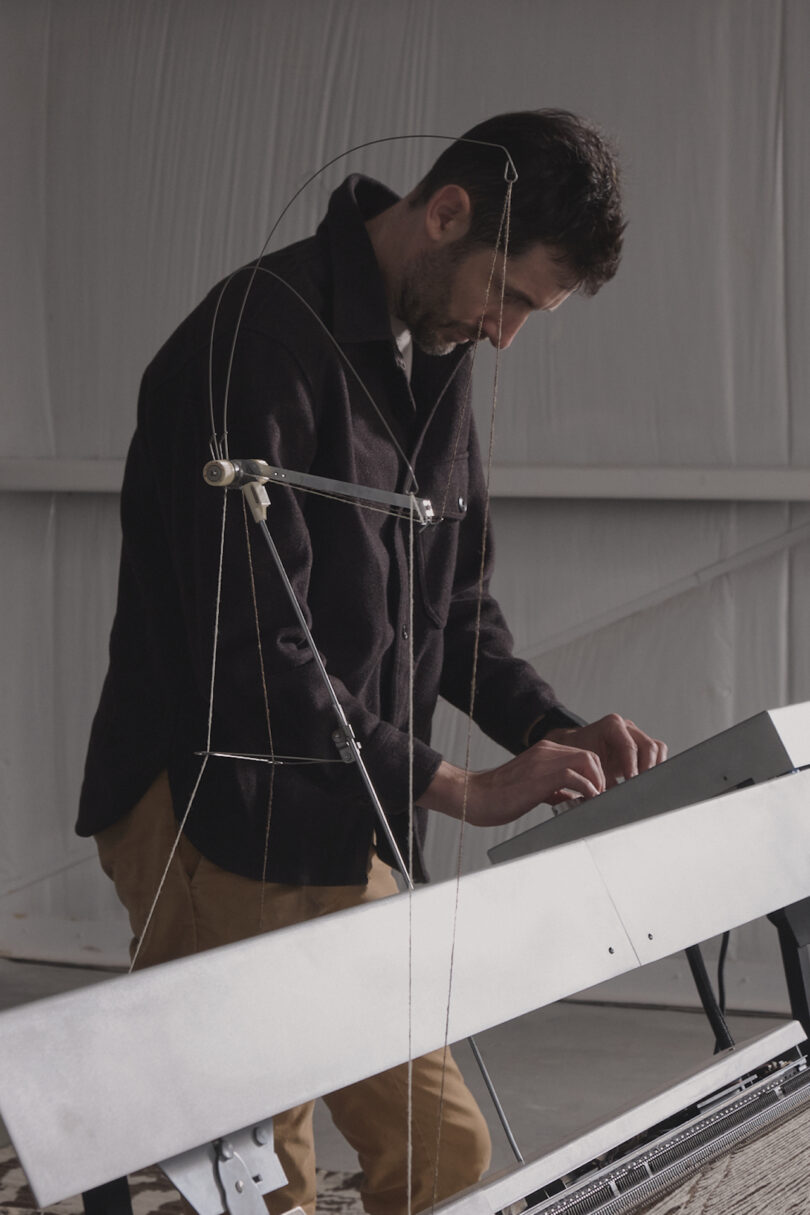
Why did you choose a knitting machine for this project?
A knitting machine mirrors the clam’s process of creating patterns line by line. It’s also lightweight, portable, and quick compared to larger tapestry machines, which is ideal since the project will tour globally. After starting in Marfa with TRAME at Art Blocks Marfa Weekend, it will travel to Hong Kong, London, Germany, and beyond. We envision multiple machines working like an autonomous bed of clams, each generating unique patterns that will never repeat.
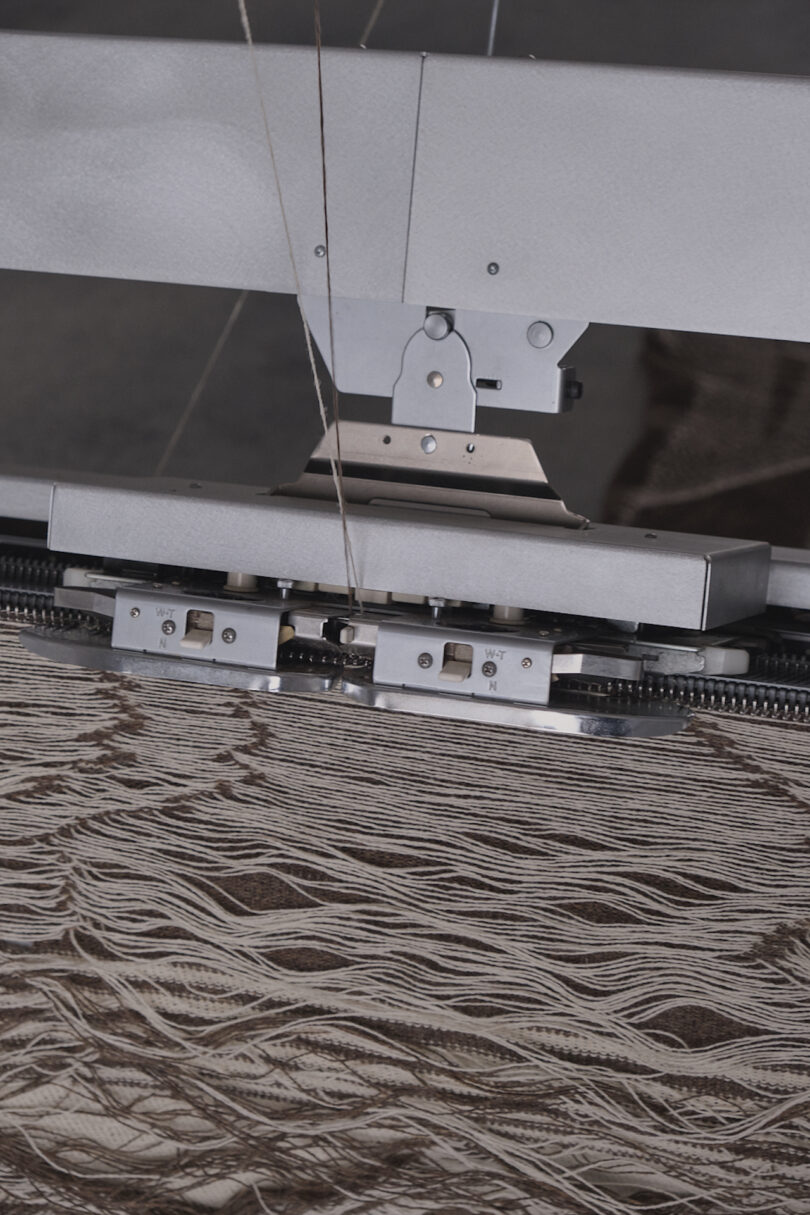
What role does the environment play in your work?
We filmed part of the project on the Pearl River Delta in Hong Kong, a tidal estuary between Hong Kong and Shenzhen. It’s an extraordinary contrast – two cutting-edge metropolises flanking a primordial landscape of tidal flats, sea life, and migratory birds. This juxtaposition between the urban and the natural is something we’re deeply interested in.
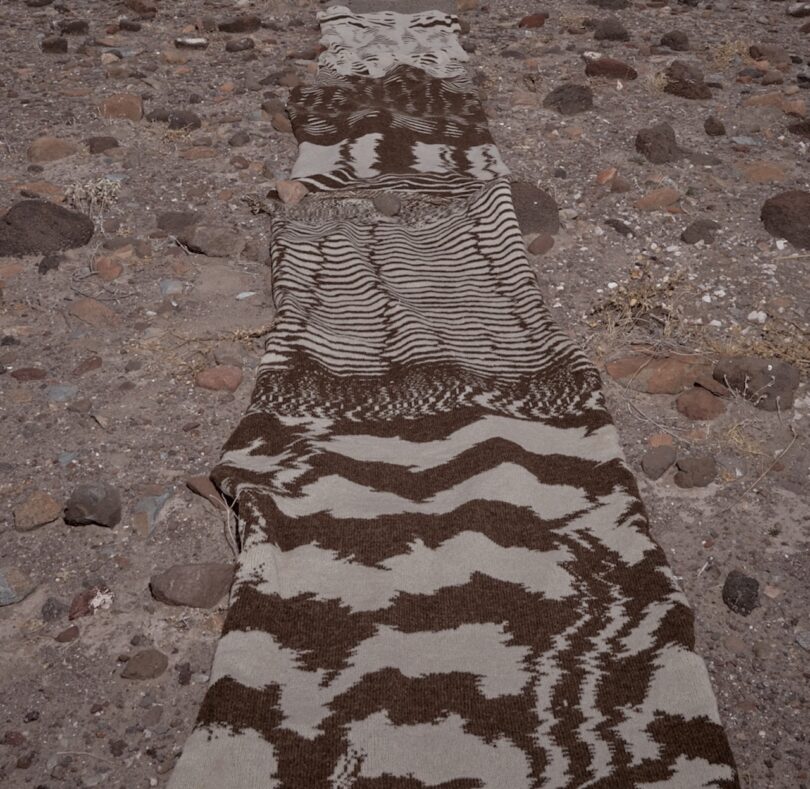
How does A Thousand Layers of Stomach connect to your broader themes?
The project is part of Happy Seafood Restaurant, a larger body of work exploring the earthy and transcendental elements of Hong Kong seafood restaurants. We extrapolate elements like neon signs and bubbling fish tanks into immersive installations – rooms filled with plasma light waves or giant fog bubbles. The generative shell patterns are another layer of this exploration, reflecting the beauty of humble materials and their connection to cosmic awe.
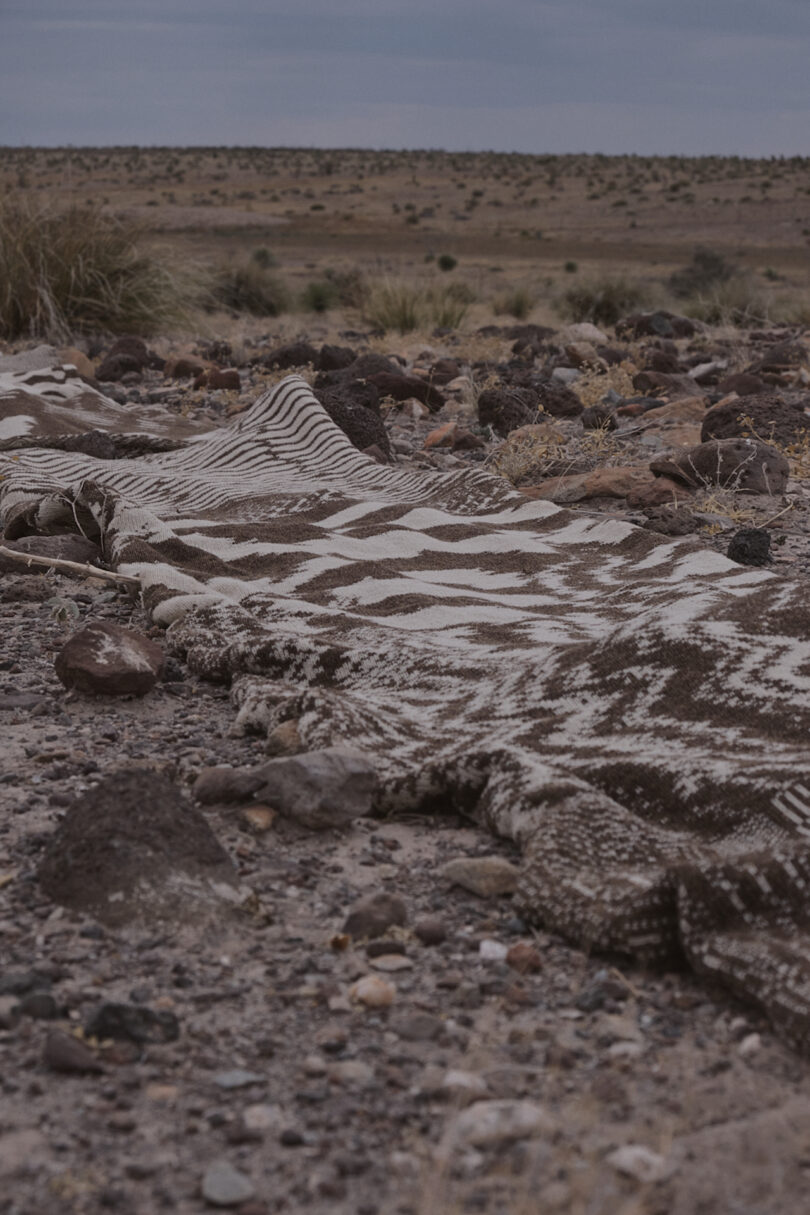
What excites you most about launching this project in Marfa?
Showing this sea-inspired project in a desert landscape thousands of meters above sea level is surreal and perfect. It highlights the contrast between the wet, tidal origins of the clams and the parched environment of Marfa. The installation is interactive, allowing visitors to manipulate generative patterns in real-time, much like the dynamic, evolving patterns on a clam’s shell.
As the project tours, it will grow into a massive textile, with the immersive installations evolving around it. We’re continuing to push the boundaries of ephemeral tech, creating systems that reflect life’s ability to generate complexity against the backdrop of entropy. For us, this project is a celebration of nature, technology, and the hidden beauty in the everyday.
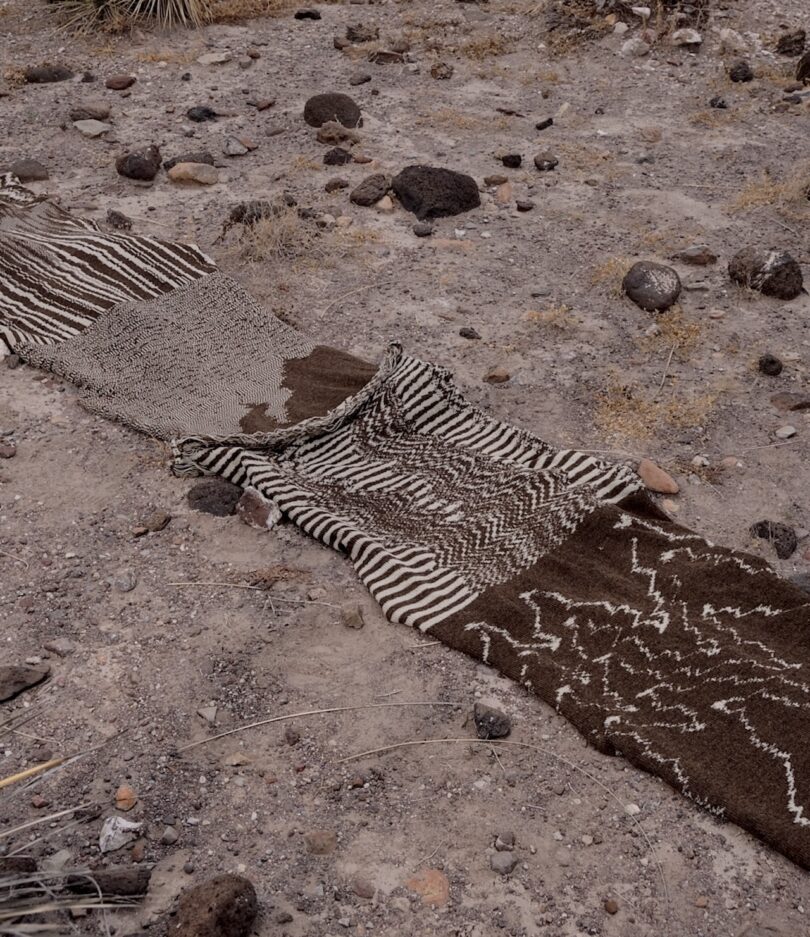
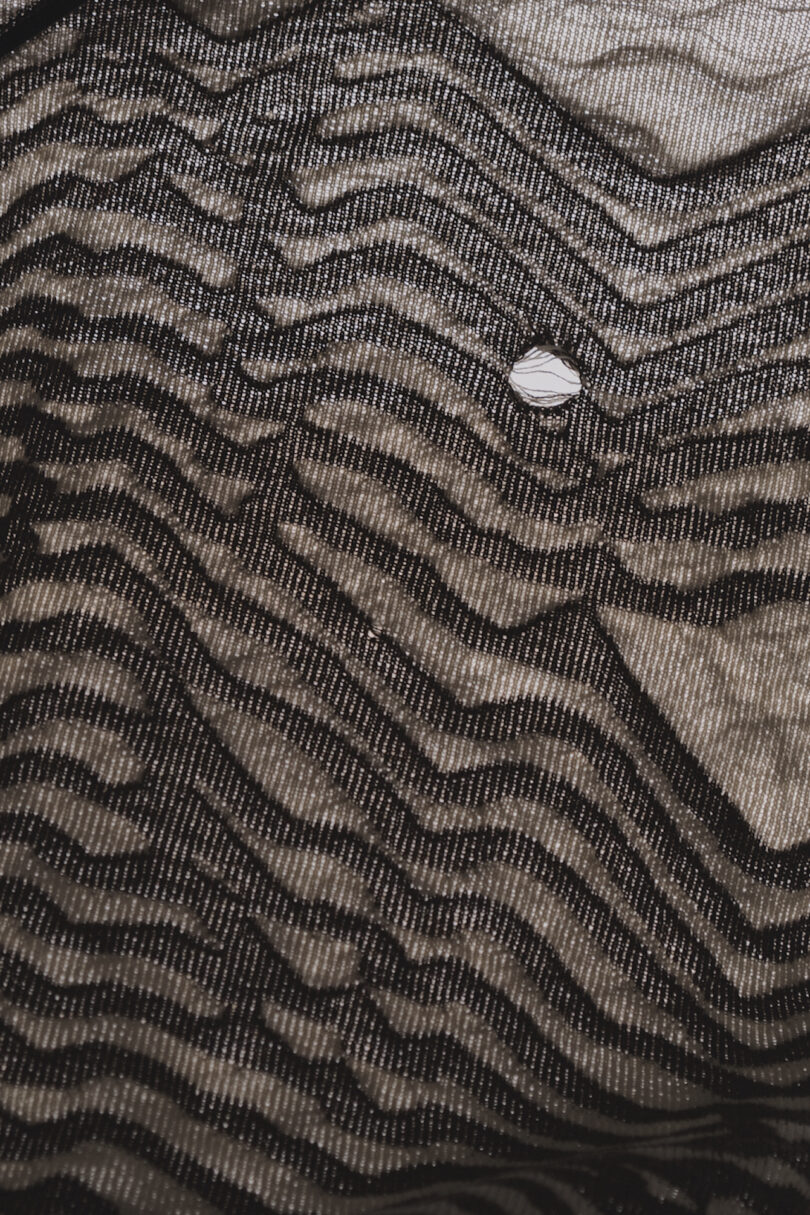

Alexander Groves, co-founder of A.A. Murakami
To learn more about A Thousand Layers of Stomach by A.A. Murakmi and find out when it’s coming to your neighborhood, visit aamurakami.com and follow @a.a.murakami, @trameparis, and @artblock_io.
